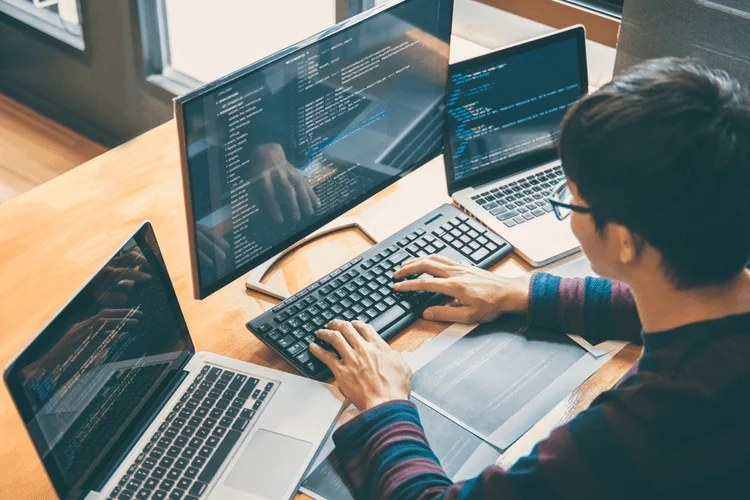Artificial intelligence can consider geography, socioeconomic conditions, economic cycles, political activity, and even the weather to accurately predict product demand. Additionally, monitoring social media algorithms can identify product trends that brands otherwise may not as easily find. Leveraging our strategic process, we help digitally enabled organizations – especially middle-market companies – do more with less. Cherry Bekaert stays on top of the latest technology trends, but we know that technology is not a one-size-fits-all solution. Cherry Bekaert is here to guide you on what technology makes sense to adopt as it pertains to delivering the highest value to your organization. One of the most common reasons R&D projects fail is because they are too slow to market and the value prop for customers was not fully understood.

Her research interest includes the production management, production planning and scheduling models, industry 4.0, enterprise resource planning systems, radio frequency identification systems, supply chain management. For example, automotive companies like General Motors are already using generative design algorithms to optimize parts and reduce weight in their vehicles. The algorithm generates several design alternatives, which are then evaluated and selected based on performance under simulated real-world conditions. This results in components that are lighter, stronger, and often more cost-effective.
Cost Reduction
Industrial companies build their reputations based on the quality of their products, and innovation is key to continued growth. Winning companies are able to quickly understand the root causes of different product issues, solve them, and integrate those learnings going forward. AI systems that use machine learning algorithms can detect buying patterns in human behavior and give insight to manufacturers.

Industrial companies that can rapidly innovate and bring higher-performing products to market faster are much more likely to gain market
share and win in their market segments. In 2018, we explored the $1 trillion opportunity for artificial intelligence (AI) in industrials.1Michael Chui, Nicolaus Henke, and Mehdi Miremadi, “Most of AI’s business uses will be in two areas,” McKinsey, March 7, 2019. As companies are recovering from the pandemic, research shows that talent, resilience, tech enablement across all areas, and organic growth are their top priorities.2What matters most? Robotic workers can operate 24/7 without succumbing to fatigue or illness and have the potential to produce more products than their human counterparts, with potentially fewer mistakes. Companies can use digital twins to better understand the inner workings of complicated machinery.
Increased Efficiency
However, with AI technology, organizations can implement predictive maintenance programs. These “smart” machines can automate the production process, resulting in more accurate results, increased productivity, and a greater ability to turn out high-quality products. Implementing AI in manufacturing settings can help organizations in significant ways (think increasing productivity, reducing costs, boosting quality, and minimizing devastating downtime). Today, many assembly lines have no systems or technologies in place to identify defects across the production line. Even those which may be in place are very basic, requiring skilled engineers to build and hard-code algorithms to differentiate between functional and defective components.
As seen on Google Trends graph below, the panic due to lockdowns may have forced manufacturers to shift their focus to artificial intelligence. Implementing AI in manufacturing facilities is getting popular among manufacturers. According to Capgemini’s research, more than half of the European manufacturers (51%) are implementing AI solutions, with Japan (30%) and the US (28%) following in second and third. In particular, McKinsey Senior Partner Vijay D’Silva applauds McDonald’s for developing apps that track footfall and training their frontline staff in understanding the metric’s importance.
Predictive maintenance
To adaptively weigh the contribution from each algorithm, an optimization-based fusion method has been developed and shown to be able to improve the estimation accuracy and robustness. Beyond images captured by vision systems, DCNNs have been increasingly extended to analyze signals that are in other forms by nature. In Ref. [109], a diagnostic system has been built to determine the gearbox fault severity level. Specifically, the 1D vibration signals were transformed into time-frequency images in order to better leverage the DCNN architecture for fault-related pattern recognition. In Ref. [110], the authors reported a novel method for both bearing fault type and severity level recognition. One-dimensional vibration signals from the sensors were first converted to images using wavelet packet transform.

Manufacturers are frequently facing different challenges such as unexpected machinery failure or defective product delivery. Leveraging AI and machine learning, manufacturers can improve operational efficiency, launch new products, customize product designs, and plan future financial actions to progress on their digital transformation. Despite the varying degrees of applicability and research gaps that exist and need to be overcome in each of the four domains, the trend is undeniably one of the increased implementation of AI-based analytical tools. That there remain significant data, and problem formulation challenges to be solved does not limit the already demonstrated opportunity for AI to transform manufacturing as we know it today.
What is AI in Manufacturing?
A. AI in manufacturing involves predictive maintenance, quality control, process optimization, and personalized manufacturing. Organizations implementing machine learning techniques to facilitate predictive maintenance programs can cut unplanned downtime and maintenance costs by as much as 30%. Integrating AI in the manufacturing industry means propelling forward into a new era of efficiency, innovation, and growth. As we’ve seen, AI’s ability to optimize production processes, predict maintenance needs, and facilitate data-driven decision-making is reshaping the way manufacturers operate.

With human analysis, there may be an extra step happening or a step being skipped. People often use the terms AI and machine learning interchangeably, but they’re two very different things. Machine learning puts data from different sources together and helps you understand how the data is acting, why, and which data correlates with other data. It helps you solve a particular problem by taking historic evidence in the data to tell you the probabilities between various choices and which choice clearly worked better in the past. It tells you the relevance of all this, the probabilities of certain outcomes and the future likelihood of these outcomes.
Reaching for a Sustainable Future
Companies are beginning to use web3 technologies to improve logistics and supply chain processes. Blockchain and smart contracts promise to increase data security, traceability, and transparency while reducing costs and administrative time. The manufacturing and industrial what is AI in manufacturing sector is currently undergoing a transformation with the advent of generative AI, the metaverse and web3 technology. Organizations can now use cutting-edge tools and solutions to streamline operations, increase efficiency, and enhance the customer experience.
- Maintenance activities aim to keep machines in desirable reliability levels or to quickly recover them from random failures.
- Organizations can use AI to augment a product’s bill of materials (BoM) with data drawn from its configuration, development, and sourcing.
- Through intellectual rigor and experiential learning, this full-time, two-year MBA program develops leaders who make a difference in the world.
- Regarding cost savings, AI-based robotics have significantly reduced labor costs for factory owners since they do not need to hire extra personnel for specific tasks like product assembly or material handling.
- Cobots are another robotics application that uses machine vision to work safely alongside human workers to complete a task that cannot be fully automated.
AI in manufacturing covers various production stages to boost efficiency, precision, and automation. It comprises algorithms, machine learning, and data analysis to allow robots to perform jobs that previously required human contact. This technology increases productivity and cuts downtime while enabling predictive maintenance, quality assurance, process improvement, and other features. AI-driven systems can make wise decisions, optimize operations, and spot trends humans would miss by analyzing enormous amounts of data in real time.
Human-Robot Collaboration
Thanks to AI, what ‘happens outside the factory’ is no longer a passing thought for those responsible for the inside. In fact, manufacturers are looking for any external data points they can gather – about their vendors, supply chain, purchases, and inventory levels over time – that will let them estimate their inventory levels a month from now. Being able to predict breakdowns in factory machinery and infrastructure with such painstaking accuracy is also extending firms’ abilities to guarantee product quality outside the factory as well. If Boeing is collecting enough censor and machine data to know exactly when the machines that make their jet engines will break down, they can make more accurate predictions about that jet engine’s longevity and functionality in the field. An alternative to a custom-built AI solution is a data-centric vertical AI platform, which can facilitate specific use cases. For example, an automated anomaly detection tool could replace or augment human workers who are tasked with quality control.
It has almost become shorthand for any application of cutting-edge technology, obscuring its true definition and purpose. Therefore, it’s helpful to clearly define AI and its uses for industrial companies. Rather than endlessly contemplate possible applications, executives should set an overall direction and road map and then narrow their focus to areas in which AI can solve specific business problems and create tangible value. As a first step, industrial leaders could gain a better understanding of AI technology and how it can be used to solve specific business problems.
3 Human Supervisory Control at the Intersection of Human–Robot Collaboration.
Some of the most difficult challenges for industrial companies are scheduling complex manufacturing lines, maximizing throughput while minimizing changeover costs, and ensuring on-time delivery of products to customers. AI can help through its ability to consider a multitude of variables at once to identify the optimal solution. For example, in one metals manufacturing plant, an AI scheduling agent was able to reduce yield losses by 20 to 40 percent while significantly improving on-time delivery for customers.
